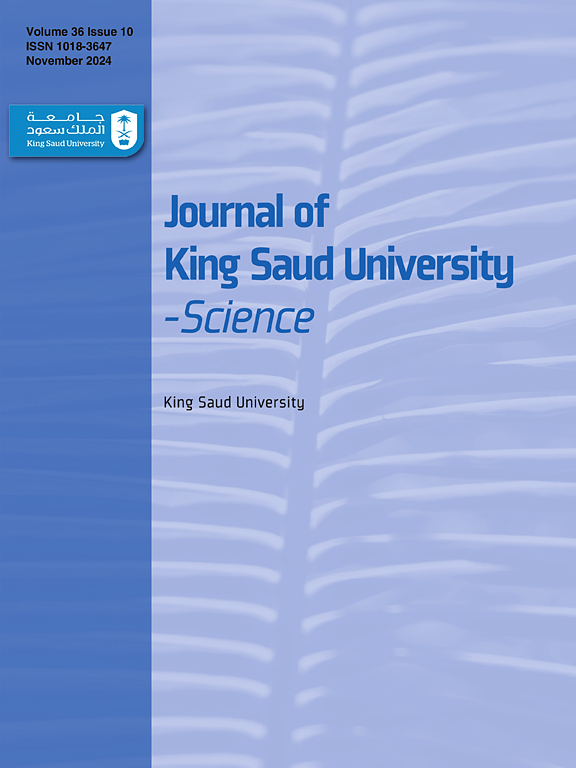通过全基因组和表达分析了解拟南芥发育过程中的 DUF789 基因家族
IF 3.6
3区 综合性期刊
Q1 MULTIDISCIPLINARY SCIENCES
引用次数: 0
摘要
具有未知功能域(DUF)的蛋白质在植物生长过程中起着至关重要的作用。然而,我们对拟南芥基因组中 DUF789 基因的全基因组鉴定以及 DUF789 基因家族不同成员的功能进化进行了研究。在拟南芥基因组中共发现了11个AtDUF789基因,并利用拟南芥、G. max、葡萄、Solanum tuberosum、Medicago truncatula和Sorghum bicolor的序列构建了系统发生树。基因结构分析表明,非编码区的数量在 4 到 5 个之间,而编码模式在 5 到 6 个之间。AtDUF789s 的启动子中特别含有顺式调控元件 ABRE、MBS 和 LTR。通过分析11个AtDUF789s在组织中的表达,我们观察到这些AtDUF789s在所有观察到的组织中都是上调的,这可能表明它们参与了植物的生长。对连作植物中 DUF789 基因家族的研究为植物育种和分子研究提供了新的有价值的数据。本文章由计算机程序翻译,如有差异,请以英文原文为准。
Genome-wide and expression analysis to understand the DUF789 gene family during development of Arabidopsis thaliana
Proteins with domains of unknown function (DUF) play an essential role in the growth of plants. However, we conducted a study on the genome-wide identification of DUF789 genes and the functional evolution of different members of the DUF789 gene family in the Arabidopsis thaliana genome. A total of 11 AtDUF789s were discovered in the A. thaliana genome, and a phylogenetic tree was constructed using sequences from A. thaliana, G. max, Vitis vinifera, Solanum tuberosum, Medicago truncatula, and Sorghum bicolor. Gene structure analysis showed that the number of non-coding regions varied between 4 and 5, while the coding pattern ranged from 5 to 6. The promoter of AtDUF789s contains the cis-regulatory elements ABRE, MBS, and LTR, specifically. By analyzing the expression of the 11 AtDUF789s in tissues, we observed that these AtDUF789s were up-regulated in all observed tissues, which may indicate their involvement in plant growth. The study of the DUF789 gene family in A. thaliana provides new and valuable data for plant breeding and molecular studies.
求助全文
通过发布文献求助,成功后即可免费获取论文全文。
去求助
来源期刊

Journal of King Saud University - Science
Multidisciplinary-Multidisciplinary
CiteScore
7.20
自引率
2.60%
发文量
642
审稿时长
49 days
期刊介绍:
Journal of King Saud University – Science is an official refereed publication of King Saud University and the publishing services is provided by Elsevier. It publishes peer-reviewed research articles in the fields of physics, astronomy, mathematics, statistics, chemistry, biochemistry, earth sciences, life and environmental sciences on the basis of scientific originality and interdisciplinary interest. It is devoted primarily to research papers but short communications, reviews and book reviews are also included. The editorial board and associated editors, composed of prominent scientists from around the world, are representative of the disciplines covered by the journal.
 求助内容:
求助内容: 应助结果提醒方式:
应助结果提醒方式:


